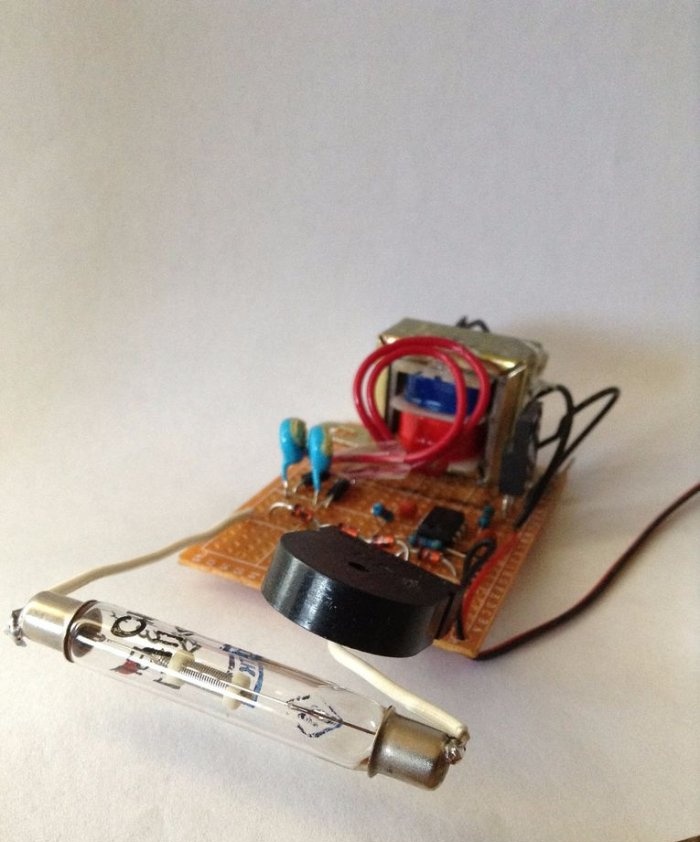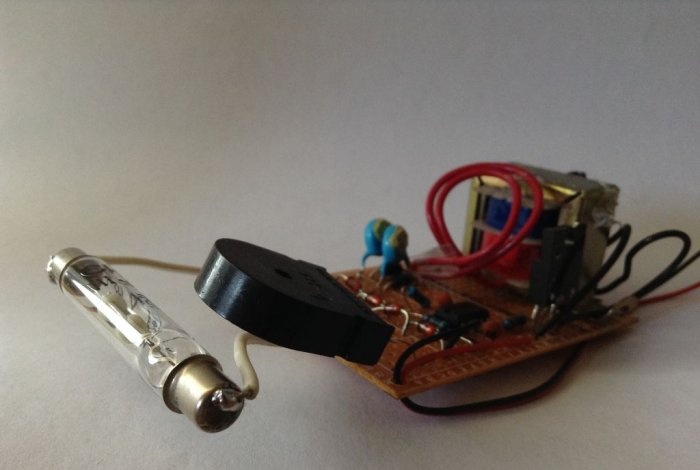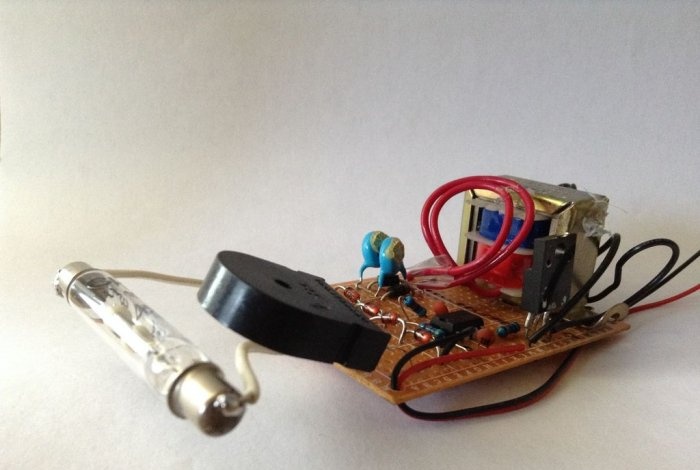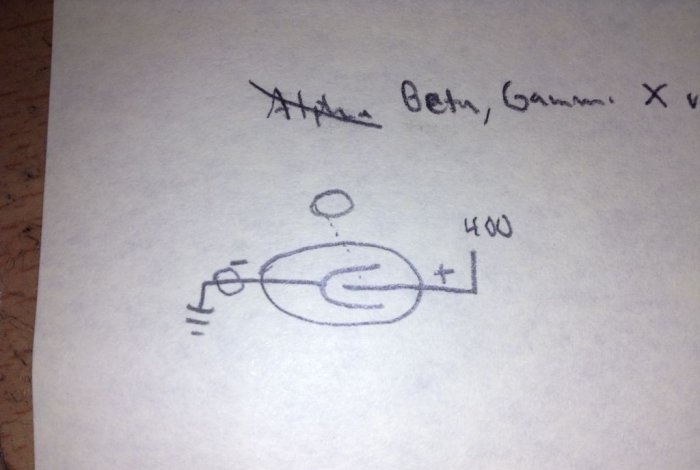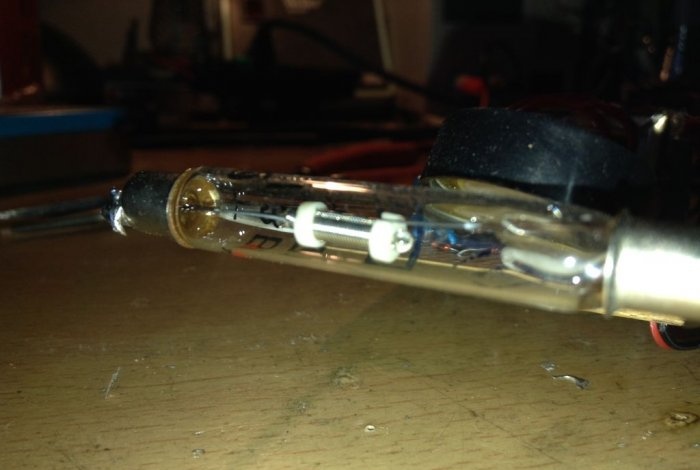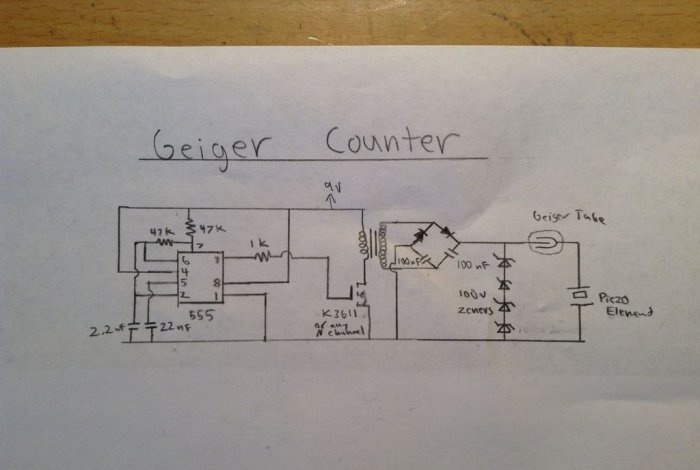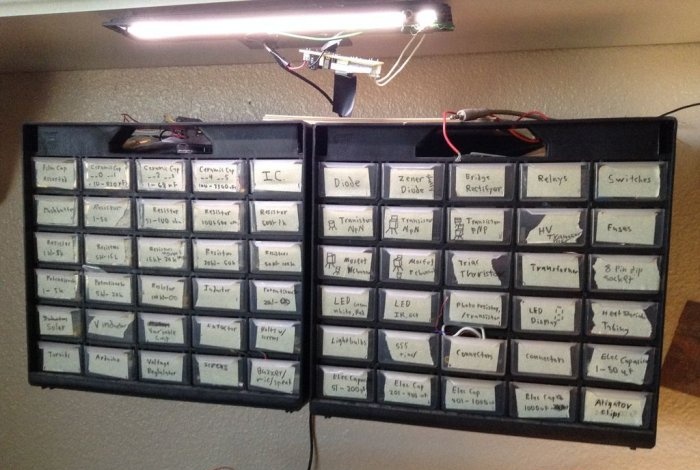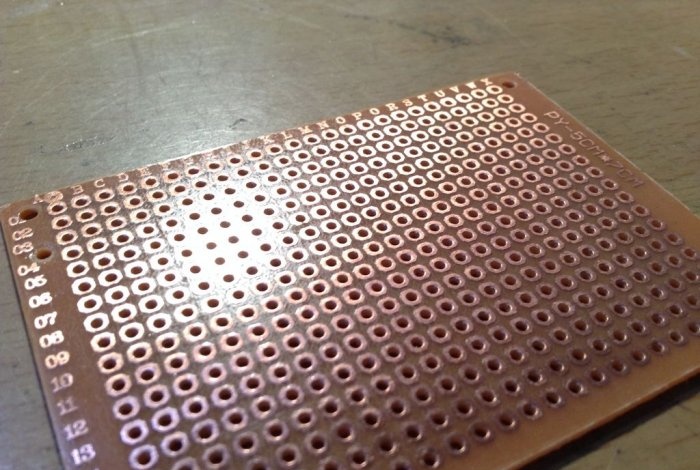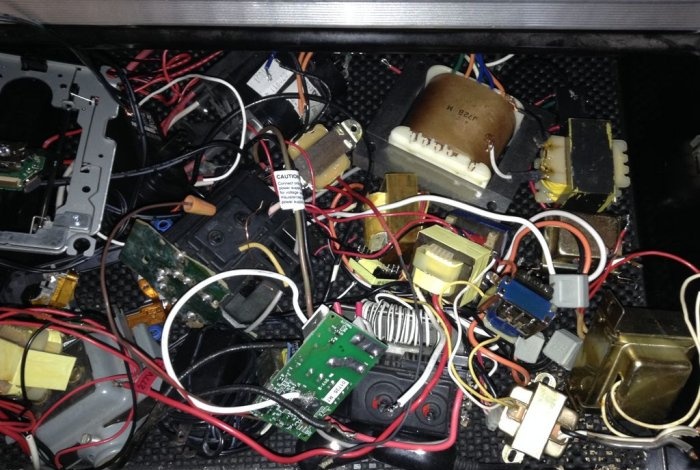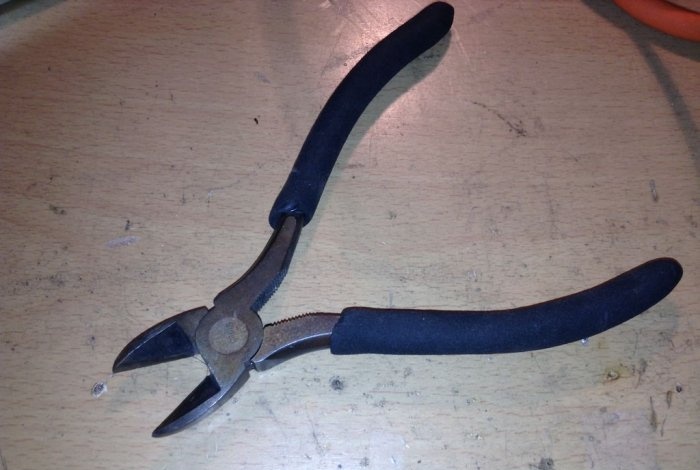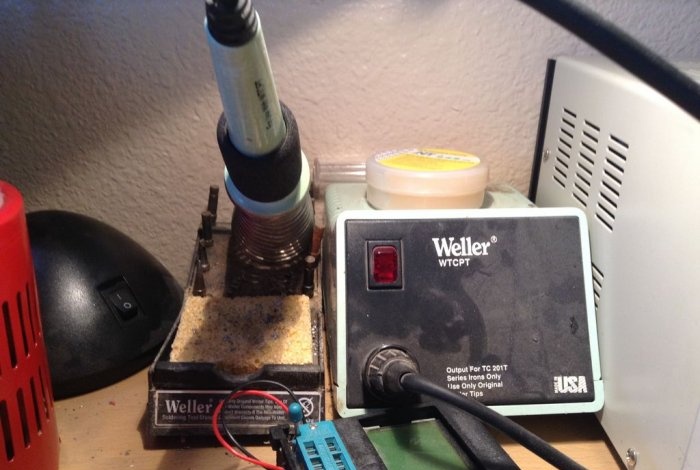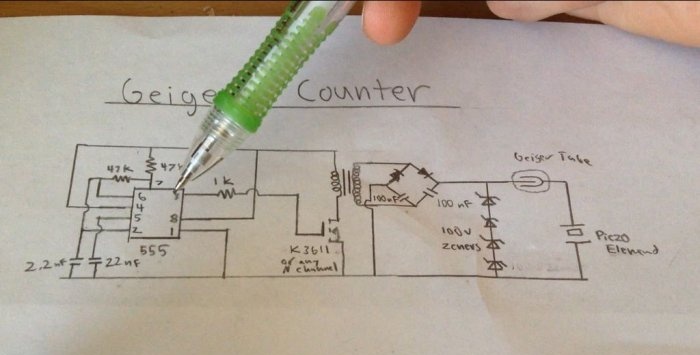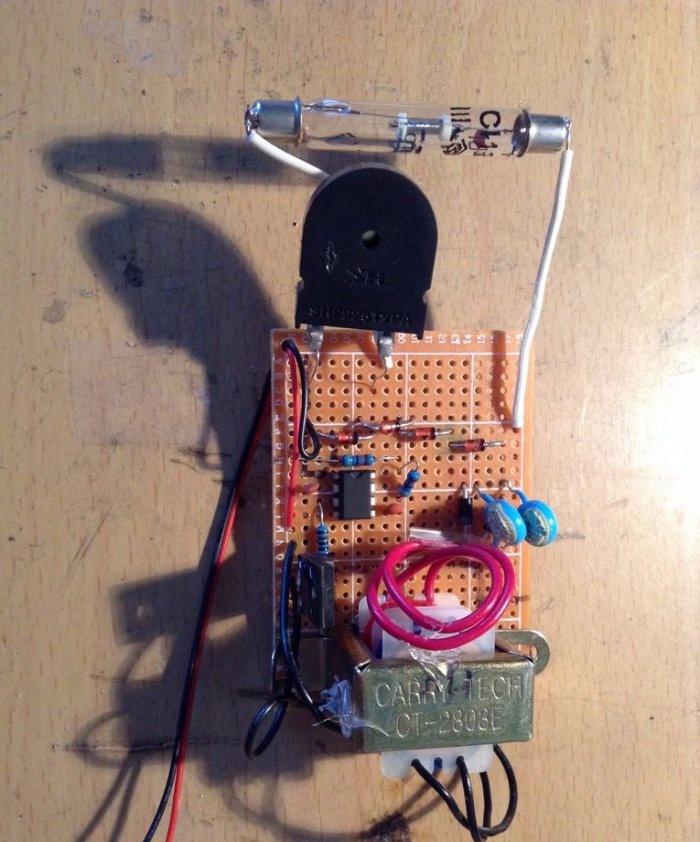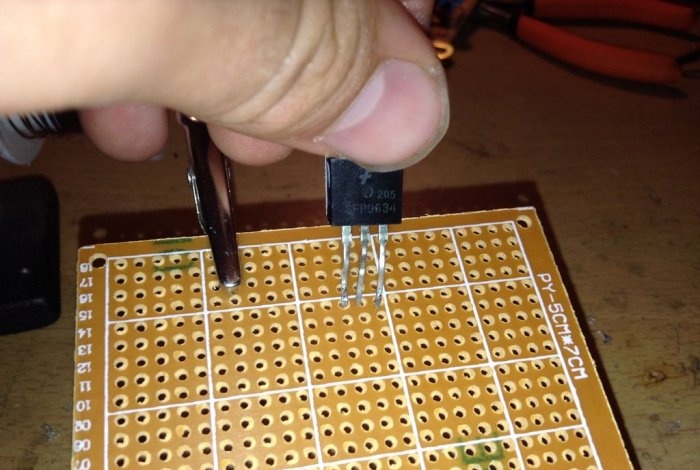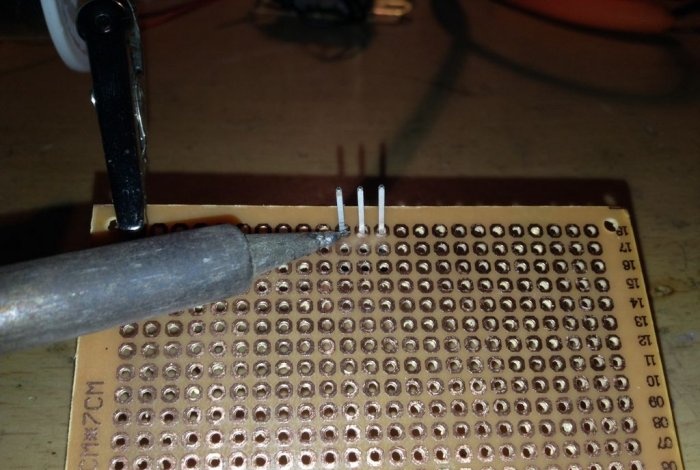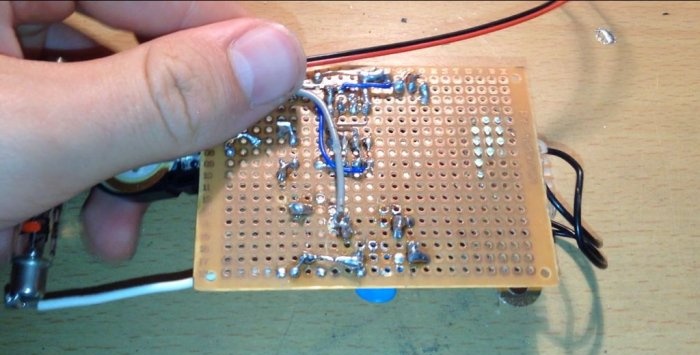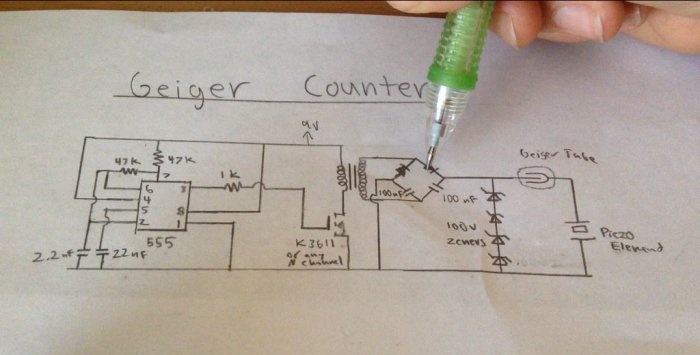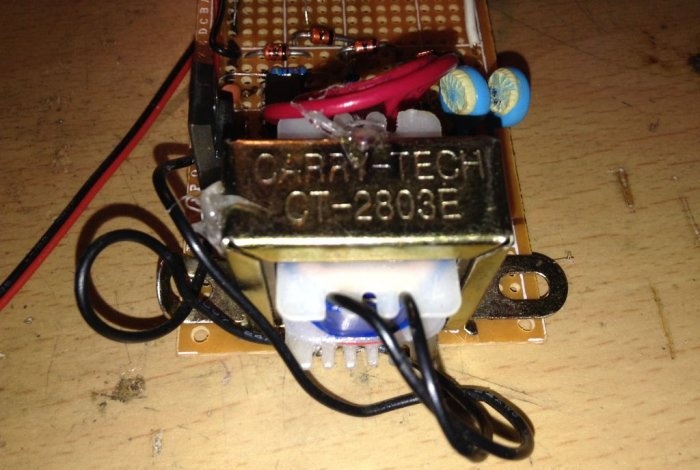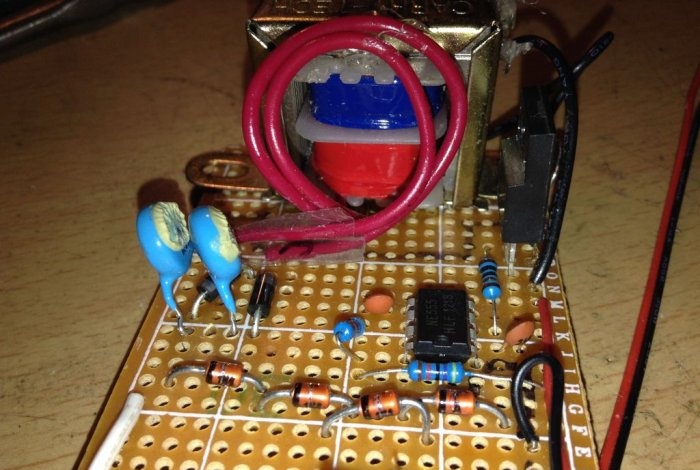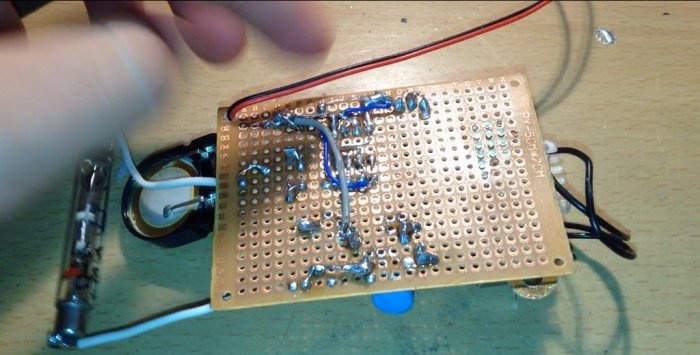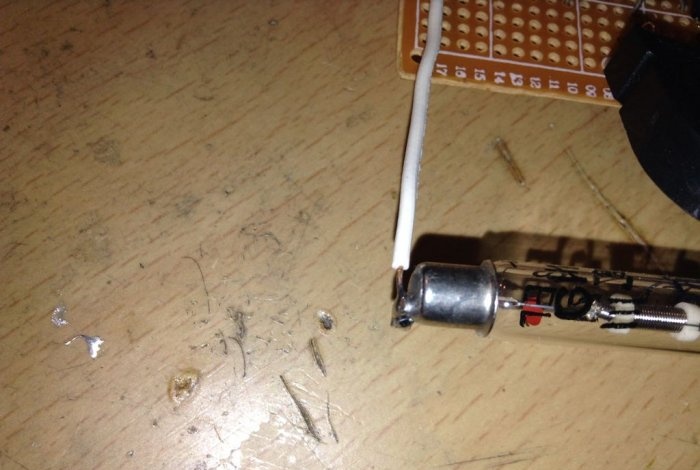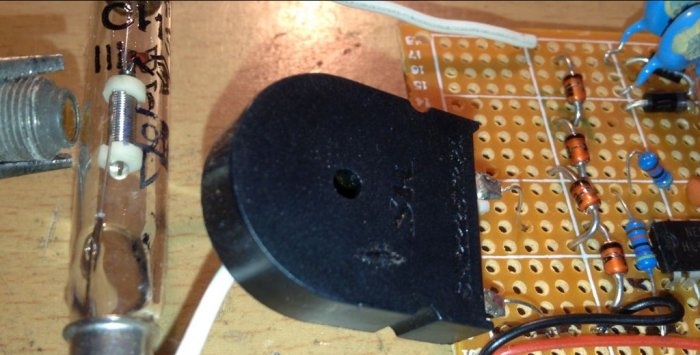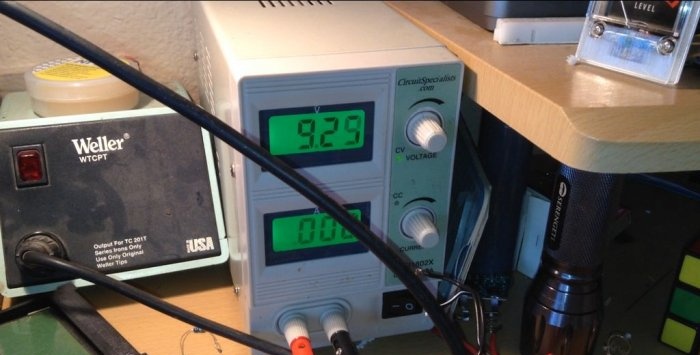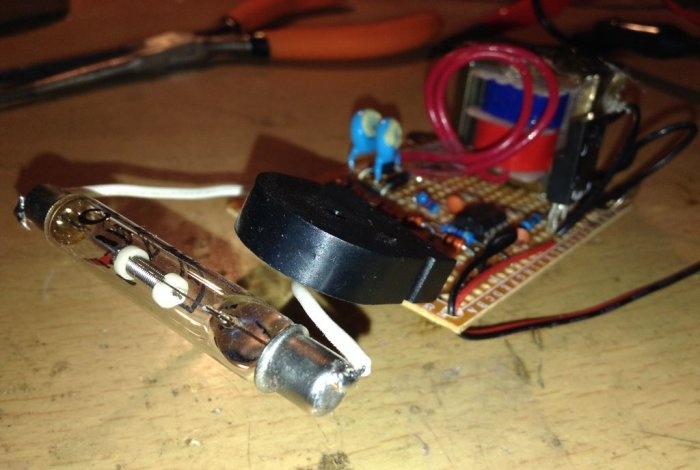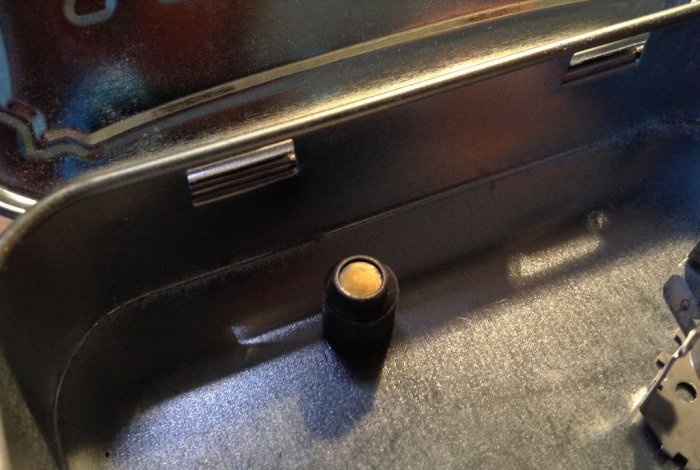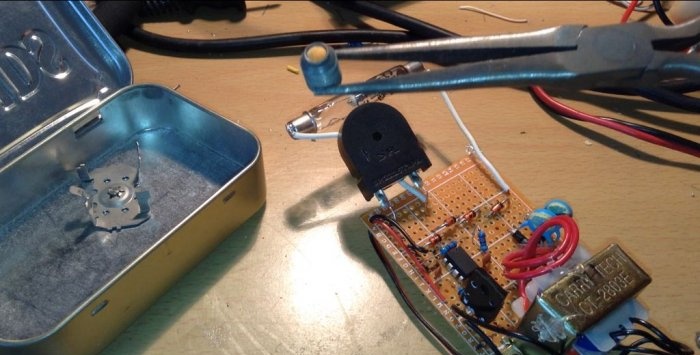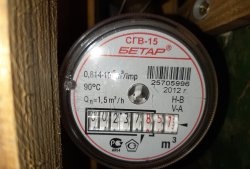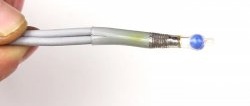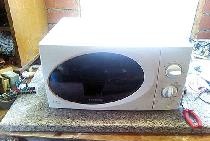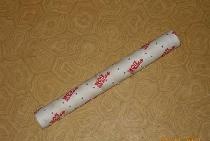Simple Geiger counter
Have you ever wanted to check your radioactivity levels? Or maybe you wanted to prepare for the nuclear Apocalypse? Then this master class on making a Geiger counter is just for you. I'll show you how to make a very simple and cheap Geiger counter from old and unwanted used parts. See the video about the assembly and operation of the meter at the end of my article. Let's start!
How does a Geiger counter work?
To start, I'll explain to you the basics of how everything works. A Geiger counter uses a special tube filled with an inert gas at very low pressure to detect radiation. Inside this tube there is a cylindrical piece of metal that acts as a cathode. Inside this cylinder there is a small piece of metal wire that acts as the anode. When high voltage is present at the anode of the tube, nothing happens, but when ray particles enter the tube, it causes the inert time to ionize and it begins to conduct electrical current. This current can be measured with special instruments, but in this circuit there will only be detection of a signal about the presence of radiation.
Geyer counter circuit
A Geiger counter consists of two parts: a high-voltage power supply - a converter and a detector. In the above circuit, the high voltage circuit consists of a 555 timer on which the generator is built. The 555 timer generates rectangular pulses that periodically open and close the transistor through a resistor. This transistor drives a small step-up transformer. From the output transformer, the voltage is supplied to the voltage doubler, where it increases to approximately 500 Volts. The voltage is then stabilized using zener diodes to the 400 volts needed to power the Geiger counter tube.
The detector consists of a piezoelectric element connected directly to the anode of the tube without any amplifiers.
Tools and Parts
To complete this project, you will need various tools and materials.
Tools:
- Wire cutters.
- Stripper for stripping wires.
- Soldering iron.
- Hot glue gun.
Details: most of them can be found from old electronic devices.
- Transformer 8:800 - this was the transformer of the power supply of the broken alarm clock.
- Geiger tube - purchased - HERE.
- Timer 555.
- Resistors 47K (x2).
- Capacitor 22nF.
- Capacitor 2.2 nF.
- Resistor 1K.
- Any N-channel MOSFET.
- Bread board.
- 1n4007 diode(x2).
- Capacitor 100 nf at 500 volts.
- Zener diodes - 100 volts (x4)
- Piezoelectric element (from an old microwave oven).
- Wires.
- Solder.
Assembling a generator with a MOSFET transistor
Once you have collected your tools and materials, it's time to move on to soldering the components. The first thing you need to solder is the generator and the transistor. To do this, install each component on the breadboard in the most efficient way.For example, solder the MOSFET next to the transformer. This will help you use less wires when soldering. Once all the parts are welded together, trim off the excess wire.
Solder the transformer and voltage doubler with stabilization
After assembling the generator, you need to solder the transformer winding with lower resistance between the MOSFET plus the power supply. Then solder the transformer output from the high-voltage winding to the doubler. Then, solder all the capacitors and zener diodes. After soldering, the high-voltage power supply must be checked with a voltmeter to ensure that it is assembled correctly and produces the required voltage. If you have a Geiger tube other than mine, look at its technical specifications to find out its supply voltage, which may differ. Then add the appropriate zener diodes.
Adding a Geiger Tube and Detector
The final part and all I have to do is add the tube itself - a counter and a detector - to the circuit. We begin to solder wires to each end of the tube. Then, solder the anode to the output of the regulated power source and the cathode to the piezoelectric element. Finally, we solder the piezoelectric element to the common wire. Thanks to the use of a detector consisting of only two components, this is considered the simplest Geiger counter. Most more complex meters contain transistors in the detector. No current limiting resistors are required in this detector due to very small currents.
Tests
Finally, it's time to check with a Geiger counter! To do this, first connect the meter to a power source. Then, take a radioactive source for testing. Using pliers, hold the radiation source close to the Geiger tube.You should hear several noticeable clicks from the piezoelectric element. This means that the meter is working properly. To hear and see this, watch the video. Thank you for reading!
Watch a video of a Geiger counter in action
Disclaimer: This project is high voltage, please follow safety precautions and work with caution.
Similar master classes
Particularly interesting

Cable antenna for digital TV in 5 minutes
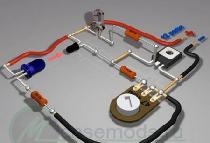
A selection of simple and effective schemes.
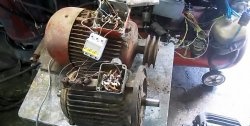
Three-phase voltage from single-phase in 5 minutes
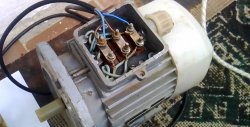
Starting a three-phase motor from a single-phase network without a capacitor

Eternal flashlight without batteries
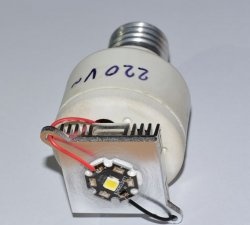
How to make an inexpensive but very powerful LED lamp
Comments (4)

